Bathrooms
The latest Bathrooms breaking news, comment, reviews and features from the experts at Realhomes
Explore Bathrooms
-

A gray and white bathroom might not sound inspiring, but this classic pairing is anything but boring
By Isabella Charlesworth Published
-
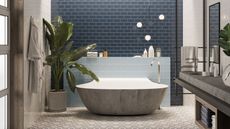
Blue and gray bathroom ideas- 6 designs to inspire a cool new look
Our blue and gray bathroom ideas inspire you to pair up and put a fresh new twist on these classic bathroom colors
By Isabella Charlesworth Published
-

Fall bathroom decor ideas — 5 sweet ways to bring in seasonal touches
Bring the cozy season into your wash space with these clever tips and tricks
By Eve Smallman Published
-

Ashley Tisdale’s mudroom renovation is giving us all the inspiration – find out how to recreate it in your own home
Step inside Ashley Tisdale's mudroom for a look at her new renovation. We’ve even tracked down the exact mirror she used!
By Ellis Cochrane Published
-
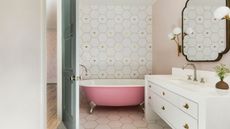
10 bathroom accent wall ideas – perk yours up with paint, tiles or wallpaper
Whatever your budget and style, our bathroom accent wall ideas will inspire you from paint to peel-and-stick options
By Sophie Warren-Smith Published
-
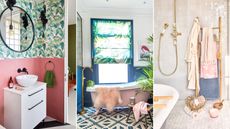
Small bathroom ideas — 10 ways to add style and functionality to your tiny space
By Eve Smallman Last updated
-

Lily Collins' bathroom is a monochrome dream — designers love the Emily in Paris star's chic style
Her Parisian-inspired space is easy to replicate with clever design techniques
By Eve Smallman Published
-

Ashley Tisdale's bathroom brings together two of 2024's most popular design trends — designers love her sophisticated style
If you're looking for bathroom inspiration, Ashley Tisdale's washroom has lots of gorgeous luxe touches. We've asked interior designers how to get the look
By Eve Smallman Published
-

Selena Gomez's bathroom is a masterclass in timeless style — design pros love her Parisian-chic space
If you're looking for celeb-approved bathroom ideas, Selena Gomez's room has so much inspiration, from the paint color to the vintage-style lighting
By Eve Smallman Published
-

5 of the best high-pressure shower heads we've tried and tested — from £16.99
Five of the best high-pressure shower heads as rated by our in-house team. See our top picks you can install yourself.
By Christina Chrysostomou Last updated
-

The AquaCare high-pressure showerhead loved by more than 35,000 shoppers is 57% off right now
Looking for Amazon deals? The AquaCare high pressure showerhead has over 64% off right now. We explain why shoppers love it and how to find it
By Eve Smallman Published
-

How to microcement a shower in 7 simple steps
See the best way to microcement a shower with this expert-approved guide. These seven simple steps will makeover your bathroom in no time
By Natasha Brinsmead Published
-

Small bathroom shower storage ideas — 10 ways to streamline supplies
From caddies and cubbies to in-shower shelving, these small bathroom shower storage ideas make for a sleeker-looking, more spacious-feeling wash space
By Tara King Published
-

This ergonomic bath pillow from Amazon has transformed my baths into hotel-style experiences
We explain why this ergonomic bath pillow is brilliant, shows you where to grab it, and speaks to experts to find out why bath pillows are useful
By Eve Smallman Published
-

10 DIY small bathroom ideas to give yours some love this weekend
Make an impact with our DIY small bathroom ideas. Our design pros weigh in on painting, tiling, adding wallpaper, and more small projects
By Sophie Warren-Smith Published
-
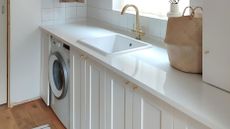
8 small bathroom laundry combo ideas to help you design this useful space
Tight on space? Our small bathroom laundry combo ideas will show you how to combine these two spaces from concealment to accent colors
By Sophie Warren-Smith Published
-

Jennifer Garner's bathroom is "light and airy" and right on trend for 2024, according to design pros
Take inspiration from Jennifer Garner's bathroom for a light and airy result. Our design pros share what they love about the star's space
By Emily Lambe Published
-

Experts answer: Is gray a good color for small bathrooms?
Deciding is gray a good color for small bathrooms? Our design pros explain how to make the most of this basic color with styling tips and decor ideas
By Emily Lambe Published
-

Is black a good color for small bathrooms? Design experts weigh in
We're asking, 'Is black a good color for small bathrooms?' to get to the bottom of this design question. See how to style a black small bathroom
By Emily Lambe Published
-
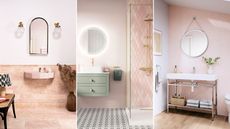
These 7 pink small bathroom ideas will add a playful touch to your space, according to designers
If you're searching for pink small bathroom ideas, we've got you covered with a whole range of inspiration that our interior designers absolutely love
By Eve Smallman Published
-
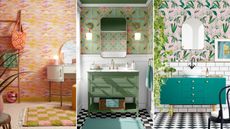
7 gorgeous retro small bathroom ideas that have bags of "vintage allure," according to designers
For those on the lookout for retro small bathroom ideas, we've got you covered with a range of different inspiration from interior design pros
By Eve Smallman Published
-
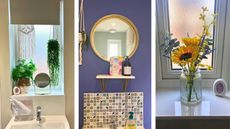
This tiny Febreze Small Spaces air freshener solved odor woes in all three of my small bathrooms
Plumbing snags caused a stink but Febreze Small Space air fresheners banished odors when cleaning, bleach, aerosols, candles and diffusers failed
By Punteha van Terheyden Published
-

Serene and soothing blue small bathroom ideas are just the ticket — 10 looks to swoon over
From murals to mixed tiling, our blue small bathroom ideas will fill you with inspiration. Experts reveal how to style blue in compact rooms
By Sophie Warren-Smith Published
-
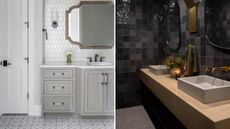
10 stunning gray small bathroom ideas to create dramatic, cozy or sleek looks in compact spaces
Our gray small bathroom ideas will elevate your space, into one that's stylish whether you're a renter or homeowner, from peel-and-stick tiles to accessories
By Sophie Warren-Smith Published
-
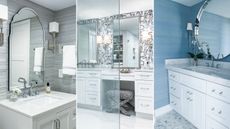
How to decorate a small bathroom without windows — 7 designer tips to make yours "bright and inviting"
Interior pros reveal how to decorate a small bathroom without windows using clever industry design tricks and clever decor
By Eve Smallman Published
-

Designers says these 7 industrial small bathroom ideas exude "urban charm and sophistication"
Searching for the best industrial small bathroom ideas? We've asked design experts how you can achieve this look, plus shop beautiful matching buys
By Eve Smallman Published
-

How do you style a boring small bathroom? Designers explain how to be "creative and resourceful"
Wondering "How do you style a boring small bathroom?" We've asked interior designers what you can do to make this space look sparkling and fresh
By Eve Smallman Published
-
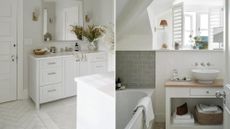
10 white small bathroom ideas that will perk up your space
Our white small bathroom ideas will inspire you to perk up this key space with accent colors, wallpaper, and metallics. Neutral doesn't have to be boring
By Sophie Warren-Smith Published
-
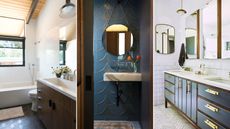
7 small bathroom layout mistakes — designers say to swerve these to "maximize potential"
Want to know the small bathroom layout mistakes to avoid? We've asked designers what not to do, plus what you can try bringing into your space instead
By Eve Smallman Published
